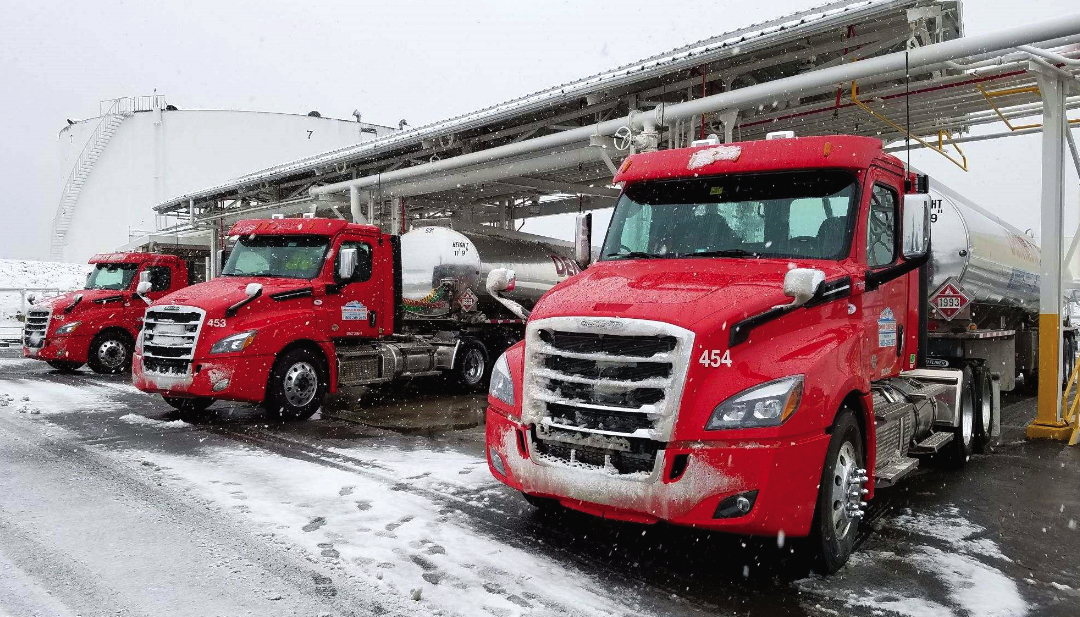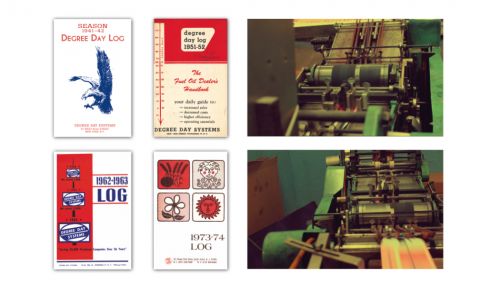All
Optimizing Operations
by Ed Burke and Kelly Burke, Dennis K. Burke Inc.

Best practices for terminal and fuel transport operators
It often seems to be that when discussions turn to logistics, supply specifics, and especially technology, people’s eyes tend to glaze over. We sometimes think of things like route optimization or supply option management as “boring” and granular processes, but they’re a necessary evil to making the exciting stuff happen. However, it’s important to remember the why. Why are we analyzing a zillion data points or spec’ing yet another tech upgrade? Because these are the factors that combine to let us give our customers and employees the best, most headache-free experience possible. Operations, supply, dispatch, and safety teams need to put some serious time into implementing and optimizing some tech, supply, and transport options to optimize operations for both customers and drivers. The following is a quick overview of our recommended best practices and how they impact operations.
Tech Stuff
Fuel transport trucks should be equipped with GPS monitoring to enable the dispatch team to assess driver movement in real time. This allows dispatch to adjust delivery scheduling and timelines, next loads, etc. from the office without interrupting drivers for status updates.
Operations can then run a custom dispatch database program that provides dispatch visibility into all customer sites. Orders go into the system and are dispatched electronically to in-cab tablets the drivers use to see and complete their stops. That dispatch visibility also allows for easy scheduling of monitored tanks and automatics. Tank monitor info is reported twice daily to the monitoring platform, which is fully accessible by both our dispatch team and the customer.
Trucks can also be equipped with barcode scanner systems for fueling, which allows for immediate detailed gallon breakdowns for multiple drop sites or equipment deliveries. This saves drivers time and creates a detailed record of each drop. It also saves customers time reconciling gallons across multiple pieces of equipment or tanks. These receipts should then be visible within the customer portal, as well as BOL information, so back-office reconciliation for customers is simplified. There are no missing papers and no waiting on slips.
On the lubricant side of the operation, lubricant products are also barcoded. Items are scanned into the warehouse, into bins, onto trucks, and then onto customer sites. This provides a full lifecycle view of each individual item across its entire journey and also ensures that, in the unlikely event of a product issue, we are able to track that specific load or delivery back across the lifecycle and resolve any impacted customers or items. The additional benefit of barcoding is that drivers are able to scan out products at delivery. That means customers get digital delivery confirmations that can be emailed to any required recipients, which again, saves back-office time on PO reconciliation and inventory tracking for both customers and our operations team in-house.
Lubricant deliveries should also be electronically dispatched to in-cab tablets used by drivers. This again allows for seamless communication of stops and real-time status reporting to the office of delivery progress. A system like this allows for customization of routes based not just on geography, but also customer product histories, hours of operation, and delivery windows. This helps the company maximize deliveries and hit time windows, resulting in fewer stops, made at the right time, and deliveries that are as small an interruption to the customer’s operations as possible.
On the rack customer side, financial systems and contract databases should integrate with TABs as well as the company’s exchange platform. This will allow wholesale customers to run concurrent and consecutive contracts across multiple pull points and products as they see fit, without lag time or confusion on gallon draw-down. Gallons draw-down against specific allocations based on pin numbers and the reconciliations on those draw-downs can be made available via automated morning emails. They can also be reported in close to real time, at any time, by the in-house supply team. Being able to keep gallons and pricing straight across multiple options mean that customers can pivot on market changes easily and maximize their budgetary goals with each lifting as they see fit.
Terminal Supply Positioning
Strategic terminal positioning can maximize efficiency for both rack customers and the terminal/transport operator’s own fleet when pulling fuel for delivered customers. Optimizing terminal positioning requires considering geographical positioning and understanding supply demands within those locations so product options can be maximized with multiple pull point options.
Multiple pull point options provide supply availability in the event of partial outages or barge issues for a given supplier. Multiple pull options also allow both the fleet and the customers to optimize pricing their loads within one location. For example, if a customer has concurrent prompts, fixed gallons, and rack options within the Dennis K. Burke Boston terminal, the driver can be instructed to “pull X, Y or Z product deal” to hedge against upside market risk or flip to rack gallons without sending the driver to a secondary terminal and losing those man hours.
Geographically, multiple locations will, ideally, overlap with major customer footprints. That allows the fuel provider to maximize drivers’ time for our delivered loads and offer convenient options for at-the-rack customers as well. Particularly around the City of Boston, where restrictions on HazMat routes and timing come into play, having options in proximity to destination points is helpful for maximizing routing and driver time.
Transportation
It is important to focus on making the day-to-day job of fuel transport drivers as painless as possible, and a substantial part of making that happen relies on the dispatchers and dispatching programs. By running a customized database for customer locations, dispatch teams can plan out optimized driver routes daily (and nightly) to factor in customer requirements, lifting requirements, and driver shift timelines. It’s not an easy feat! Routes are sent to drivers via tablets, and drivers work off those tablets throughout the day. This allows both clear communication of loads and stops and real-time visibility of work as it happens for the dispatch team. It also allows real-time pivoting when needed, which as everyone in the fuel industry knows, is more often than not. Trucks should also be equipped with GPS monitors, so between tablets and GPS, dispatch and customer service teams can communicate with customers as needed to relay delivery ETAs without having to distract drivers with phone calls. This has the additional benefit of keeping drivers off their phones without any breakdown in communication for customers, which is both a safety and customer service win.
In short, best practices means always looking for ways to refine services and improve the customer experience.
Ed and Kelly Burke are respectively Chairman of the Board and Senior Marketing Manager at fuel distributor Dennis K. Burke Inc. They can be reached at 617-884-7800 or ed.burke@burkeoil.com and kelly.burke@burkeoil.com.
Related Posts
 100 Years of Helping Fuel Retailers Deliver!
100 Years of Helping Fuel Retailers Deliver!
Posted on August 18, 2025
 U.S. Competing to Secure Critical Minerals
U.S. Competing to Secure Critical Minerals
Posted on June 16, 2025
 The Clean Air Act, the EPA, and State Regulations
The Clean Air Act, the EPA, and State Regulations
Posted on May 14, 2025
 Day Tanks Support Back-up Generators in Extreme Conditions
Day Tanks Support Back-up Generators in Extreme Conditions
Posted on March 10, 2025
Enter your email to receive important news and article updates.
